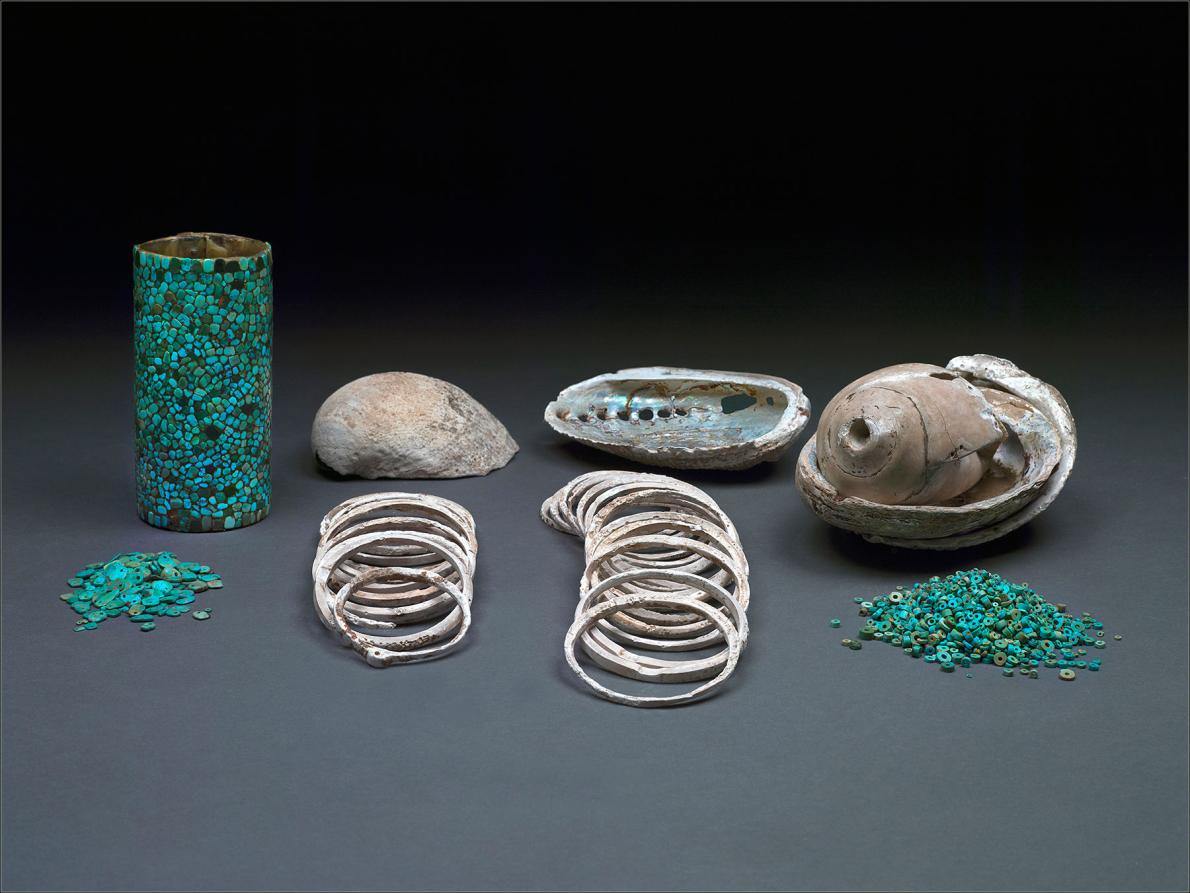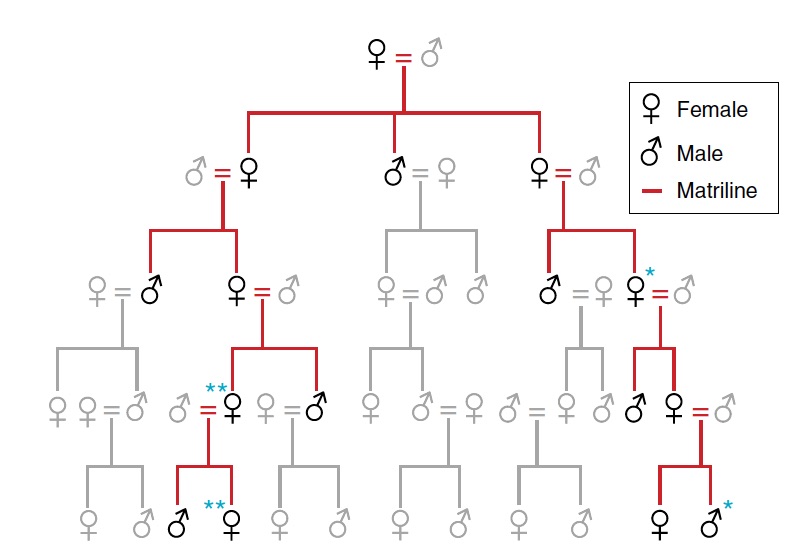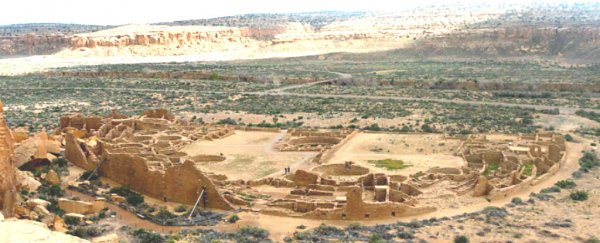Archaeologists say they've figured out who ruled the ancient Chaco civilisation in New Mexico - thought to be the most influential culture in the American Southwest more than 1,200 years ago.
New DNA analysis of nine people buried in a crypt at the centre of an enormous, labyrinthine house at the Pueblo Bonito site has identified them as rulers of a powerful Native American dynasty that passed leadership down through their mothers.
"For the first time, we're saying that one kinship group controlled Pueblo Bonito for more than 300 years," says one of the team, Steve Plog from the University of Virginia.
"This is the best evidence of a social hierarchy in the ancient Southwest."
Back in 1896, archaeologists uncovered a vast, 650-room house in the Pueblo Bonito site of New Mexico, and tucked in the very centre, they found 14 people buried in a crypt.
These individuals were accompanied by necklaces, bracelets, and other jewellery made from bright turquoise and opalescent shell, making it the "richest burial known in the American Southwest", the team describes.
The location of the crypt, and the finery that these people were buried with, strongly suggested that whatever hierarchy this society maintained between 800 and 1250 AD, these 14 were at the head of it.
 Roderick Mickens/©American Museum of Natural History
Roderick Mickens/©American Museum of Natural History
And now a genetic analysis of the remains of nine of these people has found that they all belonged to a single maternal line - "a matrilineal "dynasty", that ruled for 300 years, the researchers say.
It's an unfamiliar picture, with most societies in the ancient world being patrilineal, and producing far more kings and male nobles through the father's line than the mother's.
"It has been clear for some time that these were venerated individuals, based on the exceptional treatment they received in the afterlife - most Chacoans were buried outside of the settlement and never with such high quantities of exotic goods," says one of the team, Adam Watson from the American Museum of Natural History.
"But previously one could only speculate about the exact nature of their relationship to one another."
The results of the tests revealed that the nine specimens contained identical mitochondrial DNA - genetic material that is only passed down from mothers to their children - which means they all had the same maternal ancestor.
You can see the potential family tree below. The red lines show matrilineal descent, and the blue dots indicate grandmother-grandson and mother-daughter relationships:
 T. Harper; Kennet et al. Nature Communications
T. Harper; Kennet et al. Nature Communications
The original excavation of Pueblo Bonito more than a century ago revealed at least 12 multi-story 'great houses' in the Cacho Canyon, and dozens of settlement spread in the Four Corners, where the New Mexico, Colorado, Arizona and Utah borders intersect.
Since their discovery, archaeologists have been trying to figure out if the Chaco civilisation had an egalitarian society or a hierarchical one, and the researchers behind the DNA analysis say we finally have our answer - a hierarchy dominated by the female line.
But definitive conclusions are few and far between in archaeology - particularly when it comes to ancient societies that have not left behind written records that spell out their social structure.
While some researchers agree with the team's interpretations, others remain cautious about jumping to any conclusions, saying that this group could be one of a number of ruling elite spread across the city.
But the research has got people excited by the prospect of using DNA to find evidence of social structures - something that hasn't traditionally been done in the field of archaeology.
"I can see that this paper might generate some controversy, in terms of using biological data to determine sociological structures," Angelique Corthals, a forensic anthropologist at the City University of New York, who was not involved in the research, told Science.
"But the authors built their case very convincingly, by using both archaeological data and genomics data."
"These results are transformational in that they demonstrate the power of ancient DNA research and suggest that some members of a particular matrilineage formed an elite hierarchy with far more prestige than most members of the society," adds Robert Hard, an anthropologist at the University of Texas.
We should point out that the research has upset some in terms of its ethics, with Rebecca Tsosie, a law professor of Native American descent at the University of Arizona, who told Scientific American, "I am dismayed that there was not an effort to engage contemporary tribal leaders prior to undertaking and publishing this study."
The research is a "prime example" of "a study by cultural outsiders to dictate the truth of the history and structure of governance of the cultural insiders, Pueblo Indian nations," she adds.
Hopefully, the Chaco civilisations' living ancestors will have a chance to work directly with the researchers as they continue their investigations into this significant piece of North American history.
The study has been published in Nature Communications.
